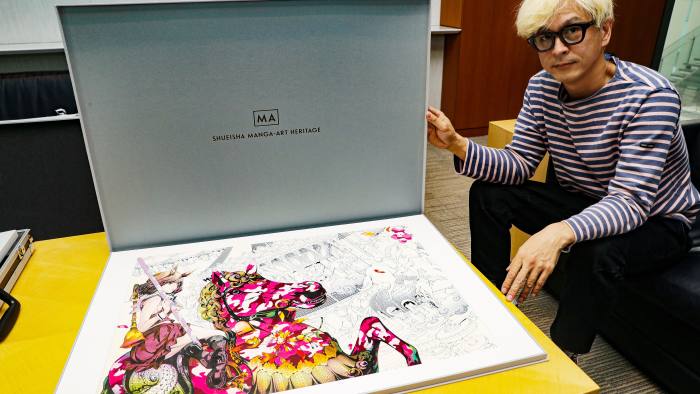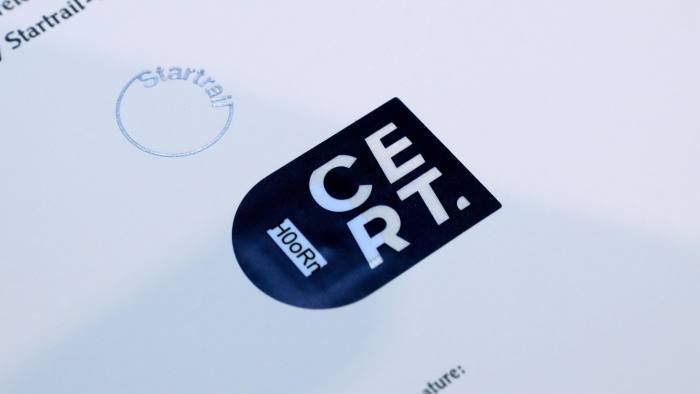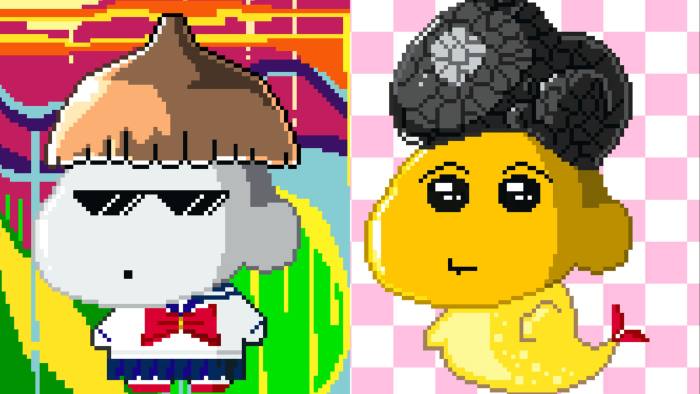NFTs turn Japanese manga and anime into true art
Blockchain technology brings new business value to Japanese manga and anime culture, turning illustrations into true works of art, raising funds for artists, and fostering the growth of the market and related businesses.
The recent boom in NFTs, or non-fungible tokens, helps verify the provenance and authenticity of digital art, which was previously difficult because digital works are easily copied. New companies are springing up to create platforms and assure buyers that the coins they buy are genuine and can be safely tracked.
A play, a megahit manga series of pirate stories that has appeared in a weekly magazine since 1997, released its 100th volume in September. In total, the series has sold over 490 million copies, which has already set a record for the most printed comic book series by a single author. To mark these achievements, publisher Shueisha has selected 10 classic scenes from the series to transform into luxury prints. They are priced at nearly 500,000 ($ 4,500) each.
A lottery was organized for the right to purchase one of the 20 limited edition prints of each illustration. The lottery, which ran from September 25 to October 3, attracted over 3,000 entries in the first two days. Not only are the coins printed by a skilled craftsman on 100% cotton paper, their authenticity is also guaranteed by a history of blockchain transactions. Each print comes with a paper certificate with an IC tag that allows the owner to see when the artwork has changed hands by reading the tag with a smartphone.
This article is from Nikkei Asia, a global publication with a unique Asian perspective on politics, economics, business and international affairs. Our own correspondents and external commentators from around the world share their perspectives on Asia, while our Asia300 section provides in-depth coverage of 300 of the largest and fastest growing listed companies from 11 economies outside of Japan. .
Subscribe | Group subscriptions
“Blockchain is often paired with digital works of art to ensure their value, but we would like to work on the technology with physical works of art,†said Masashi Okamoto, who has been leading a project called Shueisha Manga-Art Heritage since. March. He believes that registering information about the owners of works “will help original manga illustrations to increase their artistic reputation, even abroad”, as many entries for the A play Illustration lottery came from Asia, Europe and Oceania, Okamoto said.
As manga artists often illustrate for weekly publications, little effort has been made to preserve their original designs. There are artists who refuse to take their original illustrations from publishers; other drawings gather dust in the reserves.
“There is a need to preserve these manga for the next generation,†Okamoto said, adding that he started the project as a way to use a digital manga archive he launched in 2007. He believes the domestic market for digital comics at around 350 billion yen. , which puts it on a par with the art market at large. “Manga can create a new art form, instead of being categorized within an existing artistic framework,†Okamoto added.

Shueisha sells original manga illustrations as premium prints © Photo by Ken Kobayashi; BIORG TRiNitY (c) 2021, Oh! grand & Otaro Maijo / Shueisha Inc. All rights reserved.
The blockchain technology used for the Shueisha Manga-Art Heritage project is provided by Startbahn, a start-up founded in 2014 by contemporary artist Taihei Shii. Startbahn issues the certificate, which also contains information on when and where the work of art was exhibited, preserved and restored, as well as the auction house through which it was traded.
Companies, including an auction organizer and an art e-commerce service, use Startbahn’s database, using the blockchain to confirm the authenticity of works of art.
Shii, alarmed to see young artists forced to sell their works at a low price and unable to make a living, came up with the idea of ​​creating a platform that would allow artists to recoup some of the value of their works after their resale by collectors who buy them in galleries.
“It’s the same logic as registering real estate. . . The property you buy isn’t fake and belongs to you, but it’s not quite like that in the art market, â€Shii said. “And this uncertainty of authenticity has made the art market unstable.”
One critical area for art buyers is whether a piece is genuine. Except in cases where a collector purchases a work directly from a gallery, there was no way, until recently, for a buyer to verify the authenticity of a piece once it is resold. Paper records can easily be altered or falsified. Shii believed that a reliable mechanism for authenticating coins was needed to expand the market – and to broaden the definition of art itself.
Startbahn, together with the Japanese advertising agency Dentsu, began in July to offer a consultancy service to companies looking to do business in NFTs. NFTs are digital assets used to track data on everything from online gaming items to collectible cards. The uniqueness of these elements is verified using blockchain technology.

Startbahn uses blockchain technology to verify the authenticity and provenance of works of art © Ken Kobayashi
Tokens, which can be bought, sold, and traded in the same way as physical assets, created a buzz in March when digital artist Beeple sold an NFT coin at Christie’s for $ 69 million, making it the third most valuable work of art auctioned by a living artist.
A new wave has developed around generative NFT art, which randomly creates pieces using an algorithm. Art Blocks, a platform dedicated to generative NFT art, had sales of more than $ 95 million in a week in late September, according to nonfungible.com, a website that tracks NFTs. Sales were three times higher last month.
“Generative NFTs help exponentially multiply the amount of art you can create as an artist,†said Fungi, an artist based in New York City, explaining the popularity of a new type of art in which neither the collectors nor even the artists themselves know what works will result.
“As an artist today you have to be prolific to be at the cutting edge of the art because you have to produce products all the time†using platforms from TikTok to Instagram, she said. “It can be exhausting for artists. . . But generative art makes it possible to create [a piece] using only a few strokes.

Shroom Chan sets up a platform that makes it easy for an artist to create characters and also makes it easy to buy and sell their work © courtesy of the Shroom Chan team
Fungi is also the co-founder of Shroom Chan, a female-led NFT generative art project that aims to help anime creators in Japan and elsewhere in Asia. It is setting up a platform in October that will not only allow creators to create anime characters with just a few clicks, but also buy and sell images to earn money.
Japanese-style anime shows are gaining the attention of media giants such as Netflix, which said in March that it plans to release 40 new anime titles this year. But in Japan and elsewhere, anime creators are struggling to make a living despite working long hours.
“I think it’s really ridiculous that in this industry, which is now valued at $ 25 billion, people are making a lot of money. But does the money go to the actual creators? I would say that doesn’t really happen, â€said Kinoko, another co-founder of Shroom Chan. “We want to reverse this equation and help these underpaid Asian creatives. “
A version of this article was first published by Nikkei Asia on October 02. © 2021 Nikkei Inc. All rights reserved.